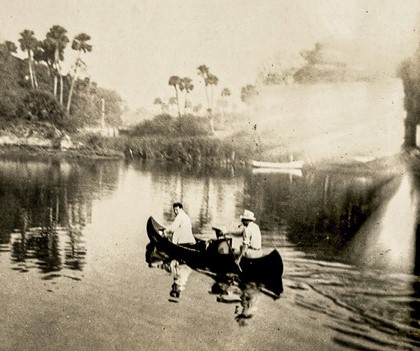The University of Miami has received a $500,000 grant from the Mellon Foundation to launch a new research and public engagement initiative tracing the complex relationship between urban development and environmental change in South Florida.
Titled “Miami as Ground Zero: Tracing the Magic City’s Environmental History and Future,” the three-year project will be led by historian Robin Bachin, associate professor of history and founding director of the Office of Civic and Community Engagement (CCE). The effort will result in an interactive timeline and exhibit documenting how Miami’s growth has shaped—and often strained—the region’s natural environment.
“This project is about understanding the environmental past of South Florida,” Bachin said, “and how urban growth and development have impacted the natural landscape and what kinds of policy decisions and planning outcomes have led to transformations of our regional environmental conditions.”
The initiative was one of just 30 selected nationwide through Mellon’s Higher Learning 2024 Open Call, and one of only 10 in the category of environmental justice. More than 470 applications from 260 institutions were submitted.
As part of the three-year project, Bachin will work closely with faculty and students from various departments across the University addressing environmental change, as well as Béatrice Skokan, head of manuscripts and archives management at UM Libraries, to select the most critical moments in Miami’s environmental history, from the 1800s to its current circumstances. Utilizing primary sources from across the state, she hopes to highlight events such as:
- The Seminole Wars of the 1830s and 1840s, which pushed Indigenous communities deeper into the Everglades;
- The 1850 Federal Swamp Lands Act, which enabled large-scale draining of wetlands;
- The construction of Henry Flagler’s East Coast Railway, which fueled population and real estate growth;
- The legacy of Marjory Stoneman Douglas, whose 1947 book The Everglades: River of Grass helped establish the Everglades as a national park;
- A broad-based coalition’s successful opposition to a planned jetport in Big Cypress Swamp;
- The 2000 Comprehensive Everglades Restoration Plan, aimed at restoring water flow and native ecosystems;
- Investigations into “Old Smokey,” a toxic incinerator in West Coconut Grove;
- And present-day efforts to confront sea level rise, extreme heat, and environmental injustice.
The grant will also fund the creation of an environmental humanities cognate—a three-course sequence fulfilling an undergraduate general education requirement—allowing students to study the intersection of environmental change, history, and culture. The University’s Center for the Humanities will also host a seminar tied to student capstone projects.
Bachin’s own course, Nature and the Environment in American History, will anchor the new curriculum, alongside planned offerings on Indigenous land stewardship, environmental writing, and religion and ecology.
The project will result in both a digital timeline and a physical exhibition focused on climate resilience, hosted at the university and informed by grassroots partnerships across Miami-Dade County.
“Whether it’s extreme heat, storm surge, or the loss of native habitats, these are not hypothetical concerns in Miami,” Bachin said. “Understanding how we got here—through past policies and planning—can help us make smarter, more sustainable decisions about the future.”






This Post Has One Comment
This is wonderful news. It is good to see that money is going to research and the preservation of Miami’s History.